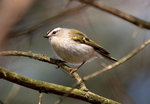Cloudy, 30° F
Efforts to study migratory and resident birds in Wyoming has taken a giant step forward, with four new bird banding stations that include the first-ever in Park County.
Yellowstone National Park …
This item is available in full to subscribers.
The Powell Tribune has expanded its online content. To continue reading, you will need to either log in to your subscriber account, or purchase a subscription.
If you are a current print subscriber, you can set up a free web account by clicking here.
If you already have a web account, but need to reset it, you can do so by clicking here.
If you would like to purchase a subscription click here.
Please log in to continue |
|




Efforts to study migratory and resident birds in Wyoming has taken a giant step forward, with four new bird banding stations that include the first-ever in Park County.
Yellowstone National Park has now joined more than a thousand bird banding stations across the nation in the MAPS (Monitoring Avian Productivity and Survivorship) program, which started 30 years ago. For park biologists, it’s better late than never, especially as birds face new challenges in changing climates.
The arrival of wildlife biologist Dr. Lauren Walker and the park’s move to the MAPS program was no coincidence. Walker, who came from the Seattle area, is a certified bird bander and has volunteered at several MAPS stations. Walker did her doctoral thesis on the black-capped vireo and its habitat in Texas. She studied the beautiful little bird for five years, she said, and knows the importance of MAPS.
Since the program began in 1989, about 1,200 stations have operated for at least a year. Stations have been operated in every U.S. state and all provinces in Canada, according to the Institute for Bird Populations. The banding efforts are collaborative and the data is used by multiple conservation and scientific organizations.
“This will benefit the park. It’s data we have no other way of getting,” Walker said.
It will take years before the data will provide conclusive information, but it also fills a huge hole in the MAPS program map.
“We’ll be filling a gap regionally,” Walker said.
The biologist said she looks forward to the information learned about area bird populations and their habitat after the program runs for years and decades. And she’s not the only Wyoming scientist who shares in the benefits of the program.
“Initial captures are great for data, but it’s recapture data that helps us understand survivorship. We don’t know if a bird survived if we never see it again,” said Zach Hutchinson, master bander and community naturalist for the Audubon Society in Casper.
The Audubon Society’s Rockies district runs five of the 10 MAPS stations in the Cowboy State.
“These types of studies help us identify important issues for area birds,” Hutchinson told a large crowd at the Buffalo Bill Center of the West last week.
Banding birds will help identify population trends — including when a species is in trouble, Hutchinson said. Without the program, he said issues critical to avain populations could go unnoticed until it’s too late. For instance, the impact of diseases are being better understood because of the banding effort.
“The West Nile virus is laying waste to a lot more birds than we realized; MAPS data helped us to learn this information,” Hutchinson said.
As MAPS continues to grow, Hutchinson is helping to get similar programs started in Central and South America — where the majority of this area’s migrating birds winter. Most capturing and banding programs rely on volunteers.
The Yellowstone MAPS program will rely on a few seasonal employees and summer interns led by Walker to collect data. But they are also looking for volunteers.
“We have several opportunities, including citizen scientist programs,” Walker said.
Those interested in helping with the new MAPS program at Yellowstone should contact Waker at: lauren_Walker@nps.gov. For more information on the Audubon Society, visit http://rockies.audubon.org or Hutchinson’s personal Wyoming site, www.flockingaround.com.